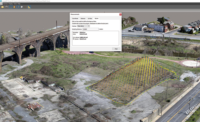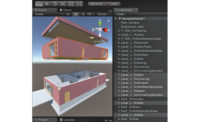Unified Platform Blends BIM, Reality Capture and Schedule

Reconstruct registers as-built images on BIM and schedule to tally progress on plan.
IMAGE COURTESY OF CLAYCO CORP. AND RECONSTRUCT INC.
In a best-case scenario, successful and often incremental research gradually evolves into products intended to solve construction problems. The creators find early adopters to help debug and tune up the offering, which then, with perseverance, leads to venture capital seed funding and product launch.
A company named Reconstruct is one of the latest examples. It announced on March 6 that it has closed a $2.4-million seed funding round led by Serra Ventures.
Reconstruct is a software-as-a-service technology that simultaneously integrates reality modeling, building information modeling and scheduling. This lets companies visually track progress, analyze productivity and proactively detect potential delays using predictive analytics.
The product is built on more than a decade of research by its co-founder and COO, Mani Golparvar-Fard, an associate professor of civil engineering, computer science and technology entrepreneurship at the University of Illinois at Urbana-Champaign.
“We named the company Reconstruct because we digitally reconstruct the reality (as-built) of a jobsite in 3D and then, over its project timeline, we visualize and compare the reconstructed reality models against the BIM and project schedule— 4D BIM—to report on progress, productivity and risk for potential delays,” says Golparvar-Fard.
One of Reconstruct’s development advisers is Clayco, whose vice president of virtual design and construction, Tomislav Žigo, latched on to it early.
“Clayco’s and my interest in Reconstruct dates back almost four years when Professor Golpavar-Fard and I were co-presenters at a technology event in St. Louis,” says Žigo. “Since then we have actively followed the development of the Reconstruct platform, especially after Clayco pioneered the use of automated data collection platforms, like UAVs.”
In the beginning, Žigo says the capability was lagging behind the goal, but he says that “didn’t seem like an obstacle at the time,” as the development team’s in-depth understanding of industry inefficiencies “was absolutely spot on.”
“Considering the relatively small footprint of this team and the more than just ‘ideological’ alignment, it was almost natural to see our feedback be translated in the functional features of this platform at the level that should definitely put to shame a few large software development enterprises,” Žigo says, adding that Clayco has been using and refining the platform on two projects and is preparing to roll it out on three more, “with very specific goals in mind: transparency of scheduling process, insight in the production data and for visual data analysis.”






